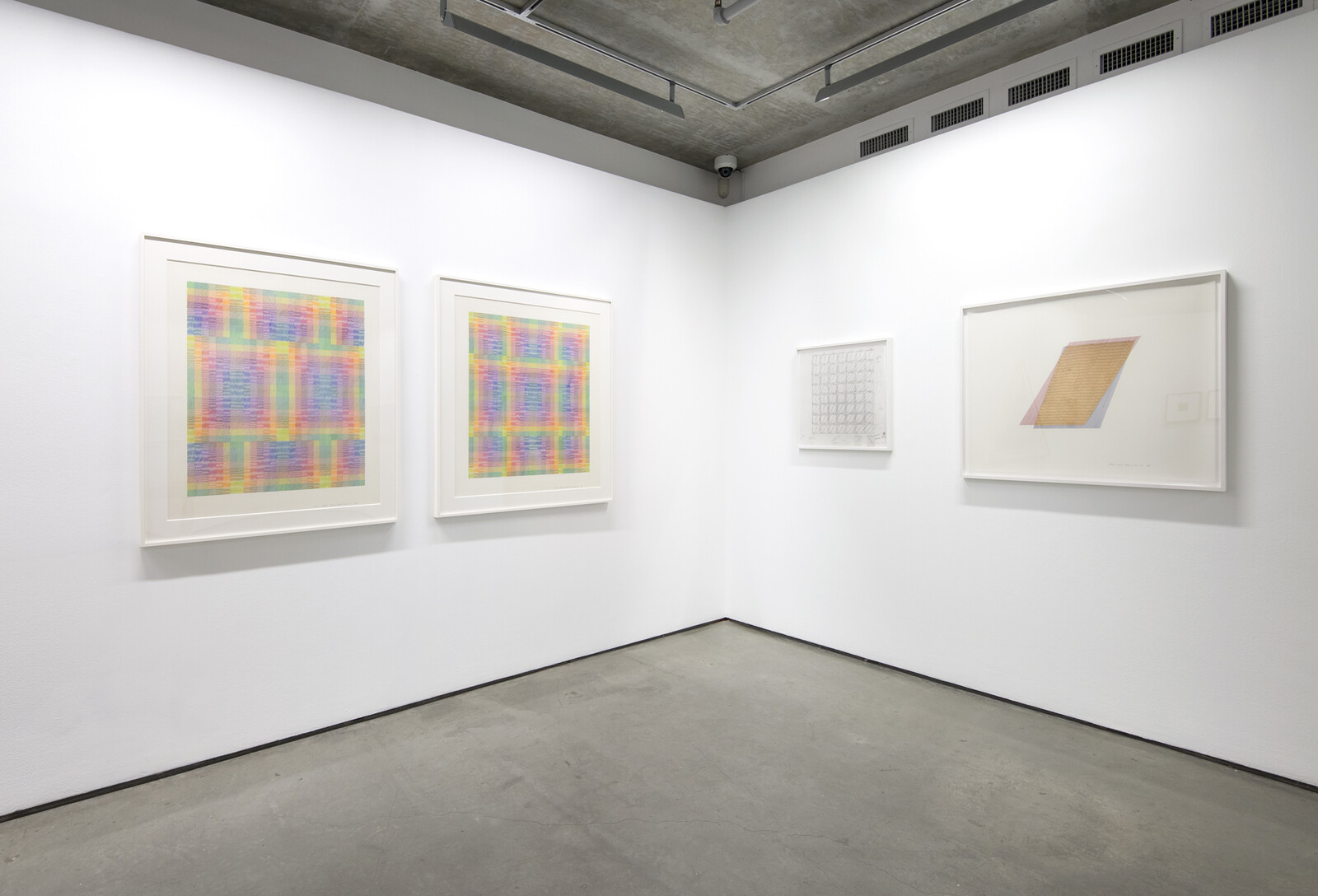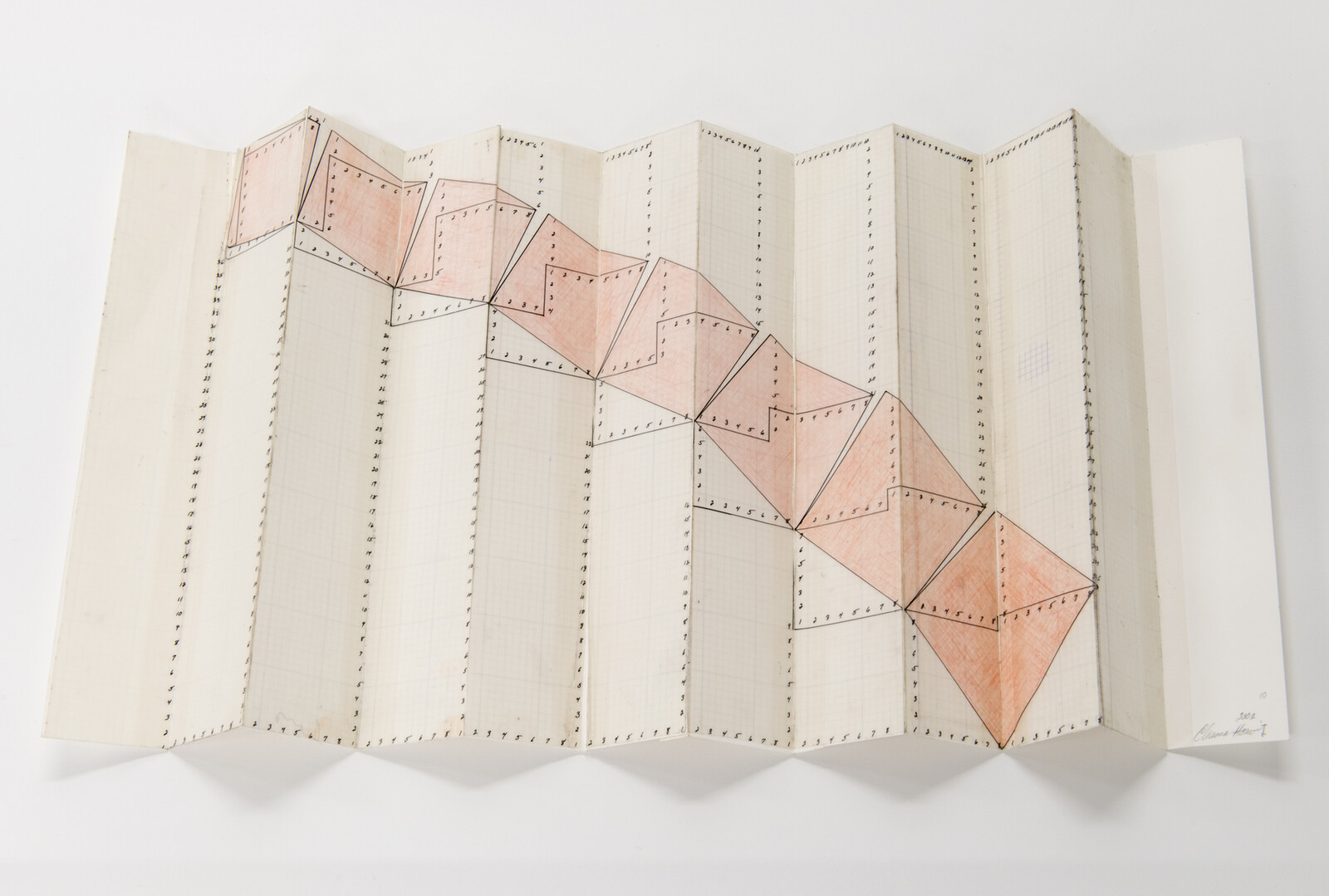Channa Horwitz produced a large body of works which she derived from mathematical equations and equivalences. She took simple sets of numbers and applied different operations to them to produce varied convolutions, which she then expressed as graphic marks, spoken words, or gestures. Individually, the geometries that emerge from these processes—whether drawn, voiced, or danced—might be redolent of a Charles Rennie Mackintosh frieze, the whispering of a stand of birches in autumn light, or the texture of gingham. Whatever they may become, the pieces always evince a scrupulous commitment to the unfolding of a defined arithmetic. Unlike certain other American artists of her generation who explored serial techniques, systems, and numerical progressions—Lucinda Childs, Christian Wolff, and her friend Sol LeWitt—Horwitz gained little recognition until the last years of her life. She passed, aged 80, in 2013.
Nigel Prince, director of Vancouver’s Contemporary Art Gallery (CAG), has worked closely with Ellen Davis (Horwitz’s daughter, who manages her mother’s estate) to curate an intimately scaled exhibition that does more than simply outline the themes of her intellectual biography or harvest a series of visual highlights. The exhibition collates a satisfying and provocative range of materials which include drawings, performance scores, archival documentation, and artists’ books that, although it cannot hope to replicate the scope of Horwitz’s work, nevertheless projects a compelling picture of her intellect and sensibility. Notable among these is a selection of index cards taken from the “Language Series,” begun in 1964 and displayed at CAG in a vitrine. These notes—personal reference points for a greater, future project—detail the permutations of a visual alphabet of eight black-and-white pictograms and represent a moment in Horwitz’s thinking where she decided to restrict herself to just a very few elements in any given composition and, in a Beethovenian manner, to work through the varied richnesses they afford. The notes presage the intricately meticulous examples of her work from the later “Sonakinatography” series (the word means “sound—motion—notation”), which saw her develop an uncomplicated graphic system using eight colors to track motion and time. Each of the works displayed in this show appears instilled with a sense of union with all the other works, regardless of their formal diversity, as a function of their underlying procedures.
A revealing moment among the videos screened in the gallery foyer, which form part of the paraphernalia that supports the main exhibition, comes during a prelude to a documented performance of her 1978 spoken word piece Poem-Opera, The Divided Person, in which eight actors read words describing oppositional qualities (inner/outer, young/old, and so on) from scores derived from one of her “Sonakinatography” drawings. Horwitz describes arriving in Bologna to perform the work for the first time, whereupon she discovered that the performance was scheduled to occur in an enormous exhibition space stuffed to the gills with an eager audience. In such group performances of her works, Horwitz says, one has to concentrate closely on reading the score accurately—following cues and prompts and keeping to a metronomic pulse. At the end, when she lifted her head from her notation, she saw that the room—in which the audience had been so closely pressed that they were standing on the performers’ scores—had been completely deserted; just two close friends remained in attendance. She relates this event with a clear-eyed and unassuming delight. For her, here was perhaps proof that her work had offered nothing that could be mistaken for something else. It was not ravishing or touching. It was not polemical or sorrowful, noble, saccharine, or sour; it offered nothing to the perplexed person in terms of identifying or overcoming an existential crisis. It may even be substantially resistant to the forms of commodification encouraged by the ready-made languages of art appreciation. As with pure mathematics, she could perhaps take an attractive, principled, and seemingly contrarian pride in the fact that her work didn’t know the thing it was talking about. It didn’t admit to a consensual, commonsense reality or to a discourse on a thing that it already understood.
On the matter of such experimental knowledge production, she wrote, tellingly, that until leaving art school in 1963, she could not find her own question; she viewed her subsequent compositional procedures as a means of attending to her desire to figure pictorially the things she did not yet understand.1 As manufactured forms of research and understanding, the works on show here seem also to pose their own questions—what constitutes an error and how one should be correctly articulated, for example. In her Los Angeles studio, any mistake Horwitz might make in the elaboration of a progression usually meant that the work would be discarded and she’d start over. But sometimes, she would play out the new logic of the error to riveting philosophical and visual effect. A good example is the drawing series “Variations and Inversion on a Rhythm” (1975), where one may see the overall, emergent shape of a system dramatically change its form due to some small, human corruption of its order. Other occasional errors aren’t treated as delinquencies at all. Smudges or blotches of ink, visible in a closer inspection of Triangle/Color (1982), are the kind of accidents toward which the aesthetic apparatus of Barnett Newman was entirely geared. Here though, they are left simply unacknowledged, convincing of neither their necessity or redundancy. This lack of a question—and her tolerance of such an open-ended approach—is the locus of Horwitz’s contemporaneity.
Walking around this show, I kept thinking back to a conference at the Huddersfield Contemporary Music Festival in the UK, where I listened to Adrian Ward and Alex McLean—members of the algorave techno group Slub—speaking in a committed, nerdpunk kind of way about the forms of liberty they were interested in and how computerized mathematical progressions similar to Horwitz’s were inextricably bound up in knowing how to articulate those liberties. Much of what they said evaded my puny grasp of computational math, but I found myself enthusing and questioning my disdain for the what I took to be the mute aloofness of abstract mathematics around, for instance, issues of aesthetics or social change. So, despite professing to have no question of her own, perhaps Horwitz’s work presents a contemporary question, asking its audiences that they further encrypt the authority of the algorithm in order to see the other kinds of freer, associative thinking that orderliness might occasion.
Channa Horwitz, A Short History, 2002. (https://lisson-art.s3.amazonaws.com/uploads/ attachment/file/body/11883/Channa_Horwitz_Writings.pdf).











